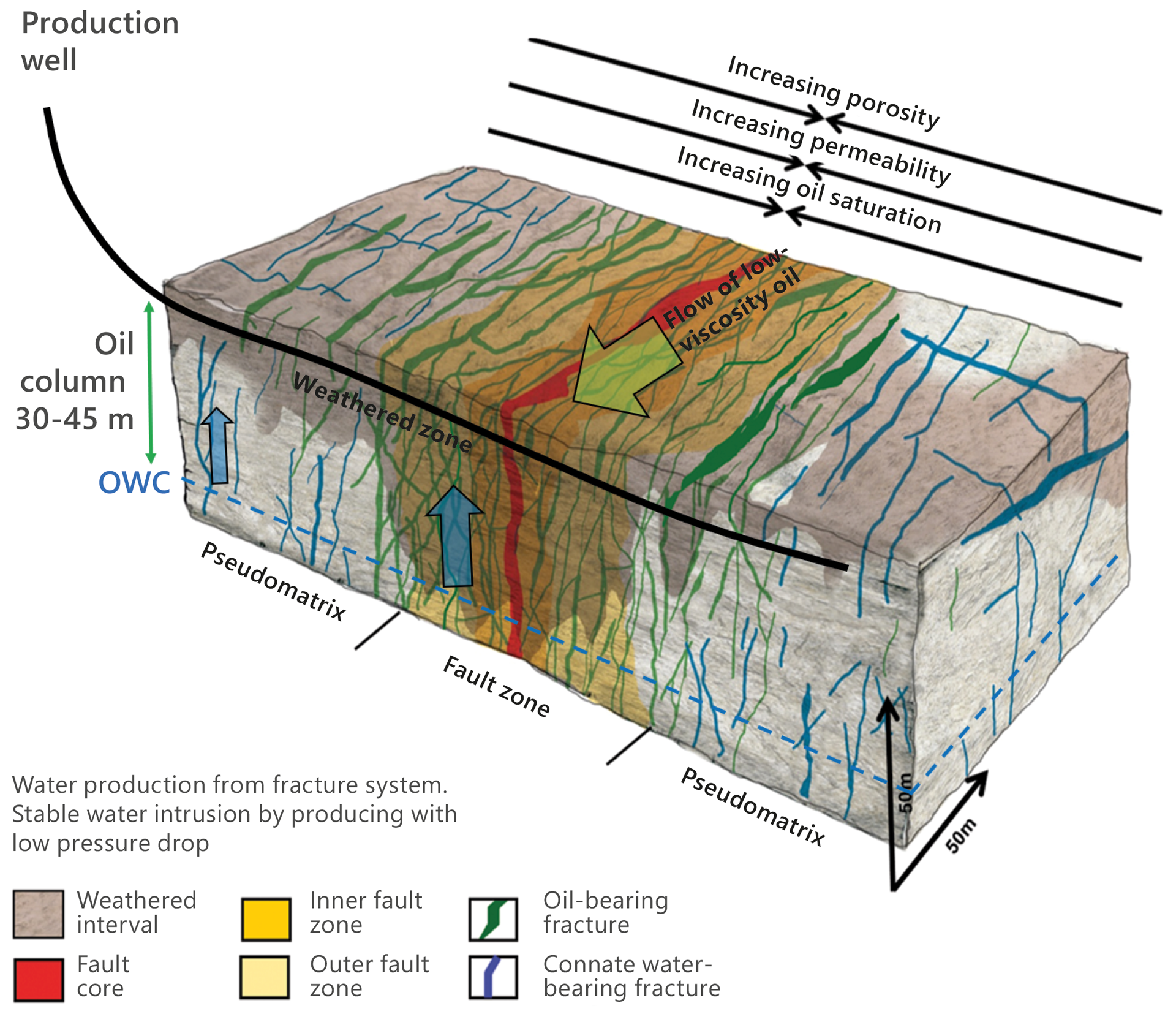Recovering oil from fractured basement rock
Based on input from Lundin:
The 16/1-12 Rolvsnes discovery has a reservoir comprising fractured and weathered crystalline basement rock, with an oil column up to 50 metres high. A successful formation test was performed in well 16/1-28 S during August 2018, and a tie-back to Edvard Grieg has been proposed for test production from June 2021. Following the formation test, the resource estimate was updated to between two and 12 million scm oe.
Test production is intended to observe reservoir behaviour over time in order to evaluate recovery strategies for a possible field development, and whether commercial recovery of the oil is feasible. Particular interest focuses on how water production in the well will develop and whether oil from the porous part of the reservoir contributes to production together with oil from the fractures.
Great uncertainty also prevails over the amount of pressure support provided by the underlying aquifer. Lessons learnt from the test will reduce uncertainty related to choice of concept for such aspects as number of production wells, completion solutions, need for pressure support and gas lift, and estimated overall recovery factor.
Experience from fracture-dominated fields globally indicates that a moderate rate of production which permits lateral oil flow to dominate over vertical water flow is a key to optimal resource utilisation. A daily oil production rate of 500 scm is planned. Proximity to the aquifer as well as the fractured reservoir type make water production highly uncertain, and a massive water breakthrough is a possible downside.

Figure 3-4 Rolvnes. Illustration: Lundin.